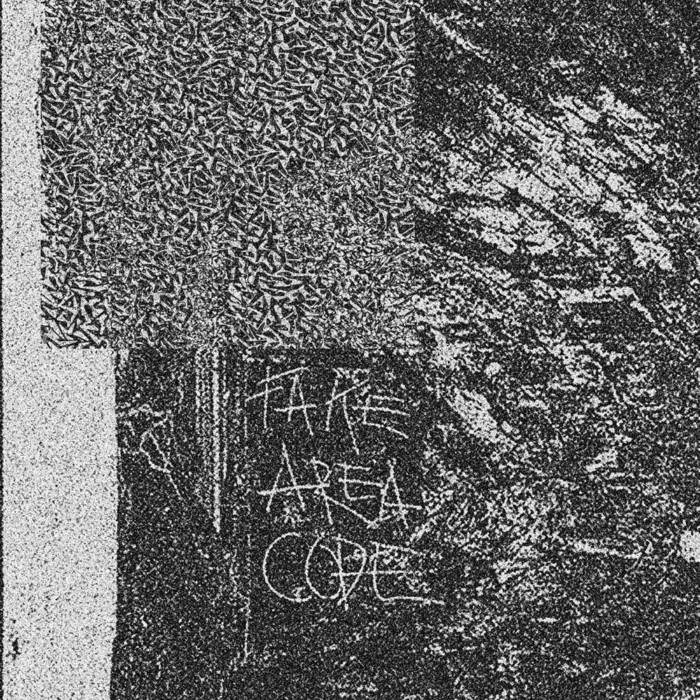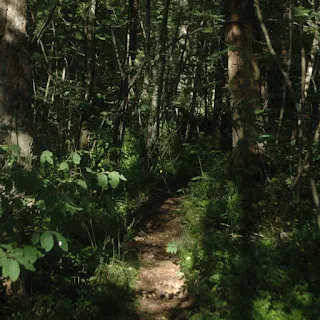
Bandcamp/Trash Can Dance
Noise rock Experimental rock Alternative rock Psychedelic Avant-rock Garage rock Indie rock
See kuuelooline ning 22-minutiline teos oli minu eelmise aasta üks lemmikuid rokk-kategoorias. Täpsemalt seda mürglit ei määratle mitte võimas energiakaarleek kitarride, trummide ning aeg-ajalt happeliste klahvpillide paistel, vaid meeleheide, lootusetus ning haavatavus. Kui avalugu justkui juhataks bändi sisse Sonic Youth'i, My Bloody Valentine'i ning Röövel Ööbiku ((kunati tõnupedarulik vokaal ning tämber (sic!)) patronaaži all, siis õige pea näikse ansambel mõistvat, et see ei ole mitte väljapääs, vaid hoopis tupiktee; mistõttu ansambel hakkab hulluma ning tuure juurde keerama, püüdes destruktiivse ahastusega kõike enda ümber lõhkuda, et efektiivselt ja elegantselt fookust kitsendada -- mitte oma energiat raisata ega hoogu jahutada --, et sinna kitsasse tunnelisse maksimaalselt tulistada. Ses mõttes on justkui tegu roki mässuga roki vastu ehk vastumürgiga etableerunud muusikale elik siis tegu on ehtsa rokkmuusikaga. Või kas ikka on? Äkki on nad aru saanud, et rokkmuusika ei ole enam teatud sõpruskonna kokkusaamise ning ühise tegevuse ja huvide põimumine ning teostamine, vaid omaette elu elav masin, mis kontrollib inimeste meeli, tundeid ja arusaamu. Kokkuvõtvalt traagika seisneb selles, et nad ei suuda ikkagi lõplikult veenda ning saavad ise ka aru -- sellest annab ilmekalt aimu lõpulugu nimega "Telekinesis", mille pikkade mürgiste hammastega sooritatakse enesetapp. See masin kontrollib ka nende meeli, tundeid ning mõttemustreid.
4/08/2024
Other Eyes – Ghost Tape #9 (2023)
1/14/2024
Pinktool – 2000-2011 (2022)

Trash Can Dance
Jungle Breakcore Alternative dance 8-bit Rhythmic noise Tracker music Acid techno Psychedelic Electronic music Sampledelic Electro pop Synth-pop Sound collage Freeformfreakout Acid house
Silver Lepik elik Pinktool paneb korraliku peo neil kolmel kassetil püsti. Madal ja kõrge, risune ja puhas kohtuvad siin -- mis on loodud eestimaise muusikaprogrammiga Sound Club. Meloodiates on kitši, umpa-umpat ja enese üle naermist; aeg-ajalt ka idamaist rõhuasetust. Teisalt rütmilises dünaamikas on loogiline järjepidevus - 8-bitised rütmid arenevad breikbiidiks ning trummiks ja bassiks. Nii muusikaliselt kui ajaliselt ei jäänud happetehno- ja hauss algusaegadel kuigi kaugele (minevikku). Žanriliselt on asi veelgi kirevam -- tantsumuusika keskmest liigub asi koguni rokkmuusika äärealadele. Või miks koguni -- loomulikult nii peabki! Peaasjalikult on asi intensiivne udjamine -- sedalaadi mürarohked ent pop-puutega biidid on üks mängulisemaid ja elegantsemaid, mida siinkirjutaja on Eestis kuulnud (Mürgelmaschine tuleb lisaks meelde). Teisalt on vahel tunne, et muusika oleks justkui salvestatud pooleldi katkise helipeaga magnetofonile -- heli kerkiks esile justkui ühest küljest/kanalist ja on tajutav teise külje/kanali õrn kaja kusagil eemal. Igal juhul on see tervitatav. Kolmas kassett on veidi teistsugune nii vormistuselt, muusikaliselt kui koosseisult -- lisandunud on Neeme Lopp ja Martin Kauber. Osaliselt on need laivülesvõtted, muusikaliselt kas rokivad või tripivad; kuigi lugude struktuurid on lihtsustunud, kostub sellest jätkuvalt läbi algusaegade pinktoolilik pujäänlikkus. See on klassika -- selle juurde olen korduvalt tagasi pöördunud ning uusi aspekte avastanud. Hiljem on Silver Lepik teinud muusikat nii oma nime kui ka Crash Test MONEY-aliase all.
12/15/2023
Fake Area Code – II (2023)

Bandcamp/Trash Can Dance
Noise rock Avant-rock Progressive electronic Neo-psychedelia Kosmische Musik Experimental rock Electronic Neo-psychedelia Freeformfreakout Space rock Improvised music
Eesti mürarokil läheb ilmselgelt kenasti -- Zahir jätkuvalt tegutseb ning sel aastal ilmusid albumid nii Fake Area Code'il kui hiljuti Other Eyes'il. FAC'i teine (muusikakriitikute klišee on, et raske) album jätkab müramist rohmakate (aju)kaablite ja lootusetult sassi läinud efektiplokkide vahel. Ikka vokaal, süntesaatorid ning trummid tekitamas toorest psühhedeeliat, milles on nii pinget, ängi, viha; ning lõppeks toimub vabanemine. Toorest liha tarbinud budist palveid ladumas. Või siis ümber pööratuna -- näiteks teise loo alguses, mis kõlab Klaus Schulze, Ash Ra Tempel'i kui Tangerine Dream'i valdustesse sisse murdmisena; et sealt hakata edasi tembutama nii vokaali, trumme kui elektroonikat keeristeks keerates. Sealses labürintjas ruumis leiab igaüks endale oma nurgakese. Mingil hetkel hakkavad tektoonilised sündibassid kogu kupatust hüpitama -- noh, hea ja halva tundmise kaev variseks maa sisse. Lõpulugu prääksub-vigiseb-tuuseldab kui ahvikäpp orki turjal. Ei viitsi enam punne albumitele lisada, aga see on kindlasti üks selle aasta rokialbumeid.
12/24/2022
Ägakäken – AxLxBxUxM (2022)
- Avant-metal
- Drone
- Extreme metal
- Death industrial
- Gorenoise
- Black noise
- Dark ambient
- Ambient drone
- Crust punk
10/09/2022
Tont – Biomass (2022)
- Drum and bass
- Ambient dub
- Organic electronica
- Psychedelic
- Dreamwave
- Field recording
- Musique concréte
- Downtempo
- Experimentalism
- Avant-garde
1/22/2021
Poon – Poon (2012/2014)
- Avant-blues
- Improvised music
- Noise
- Drone
- Freeformfreakout
- Abstract
- DIY
- Outsider music
- Psychedelic
- Lo-fi
- Bedroom music
12/27/2020
Tont – Džunglirada (2020)
- Ambient
- Avant-garde
- New Age
- Organic electronica
- Acousmatic music
- Spoken word
- Field recording
- Musique concrète
- Art music
- Sampledelic
- Experimentalism
- Post-rock
11/29/2020
Timo Petmanson – Voyage to Neptune (2020)
- Library music
- Alternative pop
- Jazz rock
- Easy listening
- Cinematic
- Space pop
- Fusion
- Lounge pop
- Psychedelic
10/30/2020
Huerequeque – Huerequeque (2020)
- Dub
- Lo-fi
- Sampledelic
- DIY
- Electronic
- Ethnotronica
- Psychedelic
- Remix
6/07/2020
Kroma – Siin kus lõpeb Maa (2014)
- Kosmische Musik
- Electronic music
- Progressive
- Space music
- Cosmic synth
Viimased uudised Minneapolise-nimelisest linnast Ameerikamaal edastavad, et osa rahvast ei taha enam politseid kui institutsiooni. Oleksime justkui jõudnud valgustatud seisundisse, kus ei oleks vaja ei politseid, kohtuvõimu ega valitsust. Robert Nozick'i klassikalises teoses "Anarhia, riik, utoopia" käiakse välja idee, et sarnaste huvidega inimesed võiksid koonduda kommuunidesse, kuid konfliktide vältimiseks erinevate kogukondade vahel tuleks palgata turvafirmad või mingi sarnane vahendav institutsioon. See peegeldab seda, et inimene on loodusest eemaldunud; konflikte ei suudeta loomuldasa isekeskis lahendada, erinevused on lepitamatuks kasvanud. Ma ei ole kindel, et inimkond oleks hetkel valmis jõuinstitutsioonidest loobuma; ei ole valmis, asemele tuleks üksnes rohkem vägivalda. Küsimus on eskapismis – kuidas põgeneda üksteise eest, kuidas vabaneda humanistlikust õudusest. Inimese kui olendi loomuse ja kui isendi ilu esilekerkimiseks oleks ideaalis vaja olukorda, kus tsivilisatsioon hukkuks ja inimene loodusliku liigina võiks tuhandetes kordades vähem asustada Põhja-Ameerika ja Aasia põhja- ja lõunaosa, Ida-Aafrika murranguala, Amazonase vihmametsa, Mikroneesia ja Paapua paradiislikke kaldaid. Alasid, kus oldaks vastamisi ülekaaluka looduse stiihia ja iluga, mis ühelt poolt annab loodusele võimaluse ja teisalt sunnib inimest keskenduma olulisele, mitte tegelema seinast-seina lolluste ja puudustega (majandusnäitajad, lõputu võlaorjus, tööpuudus, nipsasjade ihaldamine, (kontseptuaalne) ülemõtlemine, ühte ideoloogilisse sohu vajumine ja (ideoloogilised) sõjad, saastatus, drastilised meeleolukõikumised, enesetapud, upsakas egoism, sookvoodid- ja neutraalsus, rassiprobleemid, silmakirjalikkus, vähemused ja põgenikeprobleemid jne). Teisisõnu, kui suudame end kõigest sellest piisavalt distantseerida ja selge pilguga hinnata, siis võime südamerahuga tõdeda, et elame hiiglaslikus vaimuhaiglas. Eksistentsiaalses mõttes – suhestatuna loodusega – on käesolev olukord kõigest agoonia pikendamine. Inimene kui loomaliik peaks lähenema loodusele, peaks muutuma loomalikuks-loomulikuks. Teine võimalus oleks kosmosesse põgenemine, aga seda võimalust ei ole ega tule – mis kuidagi ei korreleeru piletihulga ja -hinnaga, mida Elon Musk'il on õnnestunud ullikestele miljonite eest maha müüa. Märgatavalt odavama ja käegakatsutavama kosmosereisi saab hankida Antti Turpi ehk Kroma muusika vahendusel, mille pealkirjad viitavad varasematele põgenemistele (nt Lem'i "Solaris", Verne'i "20 000 ljööd vee all"). Ainuüksi plaadifirma Trash Can Dance poolt üllitatud kassettväljaande kaas teeb südame soojaks – Mirabilia raamatusarja stiilis kujundatud skafandris eskapist jälgimas ekraanilt iludust nimega Maa. Kõrvuti leibelikaaslaste Trent Hawkins'i ja Day Of The Triangle'iga on Kroma korralikult panustanud teadvuse avardumisse ja puhastumisse-korrastamisse. Tõepoolest, sõna "kosmos" ja ka sõna "kosmeetika" pärinevad etümoloogiliselt ühest ja samast kreekakeelsest sõnast "kónsmos", mis osutab korrastatusele või korda tegemisele. Atmosfääriline korrastatus, mida hoiavad alal pulseerivad (analoog)süntesaatori rütmid ja kaunistavad sünteetilised arengud ülakihtides ja eemal/kaugustes. Hea on olla kosmoses, veel parem lokaalselt kodus. Vaimselt ja füüsiliselt terves kodus.
12/10/2018
Day Of The Triangle – bizarre world of non (2018)
- Kosmische Musik
- Electronic music
- Alternative
- Synth-pop
- Ambient techno
- Cosmic fusion
- Soundscape
- Crossover
- New Age
- Deep house
11/14/2018
Aigar Vals – End Game (2018)
- Shoegazetronica
- Synthwave
- Post-punk
- Alternative rock
- Ethereal wave
- Epic
- Dream pop
- Indie
- DIY
- Art pop/rock
- Crossover
4/15/2018
Ilya i Alisa – Winter Invocation (2007)
- Micronoise
- Avant-garde
- Drone
- Microsound
- Experimentalism
- Leftfield
- Spoken word
- Alternative
- Acousmatic music
- Electronic music
- Field recording
- Musique concrete
- Art music
9/15/2017
Cuubik. – to James (2016)
- Indie pop/rock
- Alternative pop/rock
- Dream pop
- Lo-fi
- DIY
- Psychedelic rock
8/17/2017
Tont – Vaba Vesi (2017)
- Ambient
- Abstract
- Experimentalism
- Avant-garde
- Field recording
- Alternative
- Organic electronica
- Musique concrète
- World music
- Ethnotronica
- Spoken word
12/05/2016
Trent Hawkins – Ninnananne/t2helaev (2015/2016)
- Kosmische Musik
- Krautrock
- Ambient
- Synthwave
- Electronic music
- Alternative
- Art music
- Mood music
5/16/2016
Ilya I Alisa – I Entered The Dark Forest (2011/2015)
- Post-punk
- Alternative rock
- Drone
- Electronic music
- Art rock
- New Weird
- Avant-rock
- Progressive rock
- Dream folk
- Spoken word
- Avant-garde
- Experimentalism
- Ambient
12/28/2015
Day Of The Triangle – Salvia Sundays (2015)
- Kosmische Musik
- New Age
- Space music
- Ambient drone
- Soundscape
- Psych-rock
- Electronic music
- Motorik
- Ambient
- Krautrock
12/20/2015
Tont – Rändurvaim (2015)
- New Age
- Organic electronica
- Dark ambient
- Sound art
- Experimentalism
- Space music
- Electronic music
- Live session
- Avant-garde
- Art music
- Musique concrète
12/11/2015
Kroma - Prince of the City (2015)
- Kosmische Musik
- Space music
- Cosmic fusion
- Chilltronica
- Electronic music
- Synthwave
- Soundtrack

















